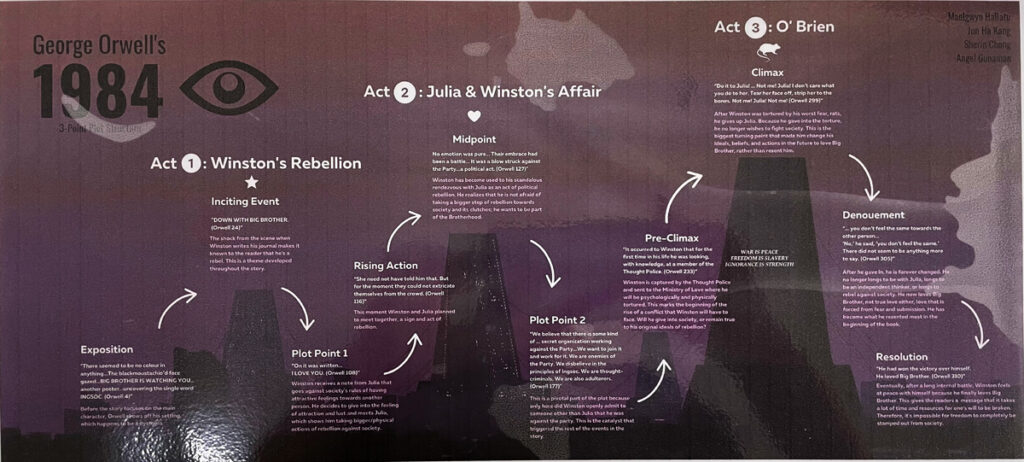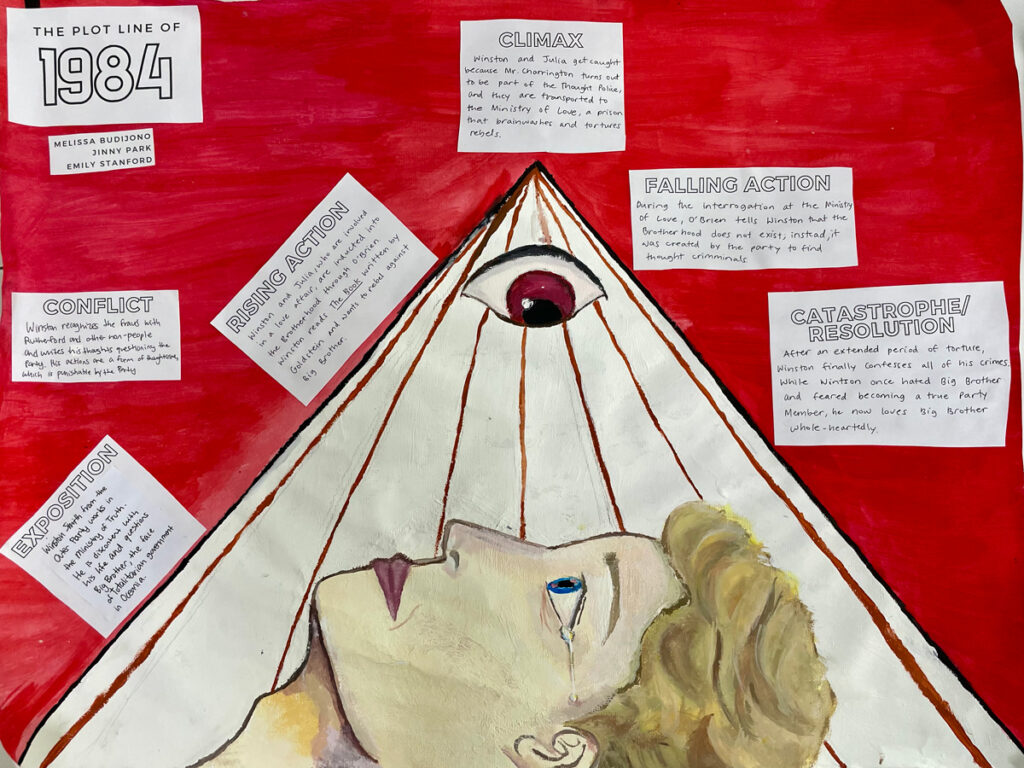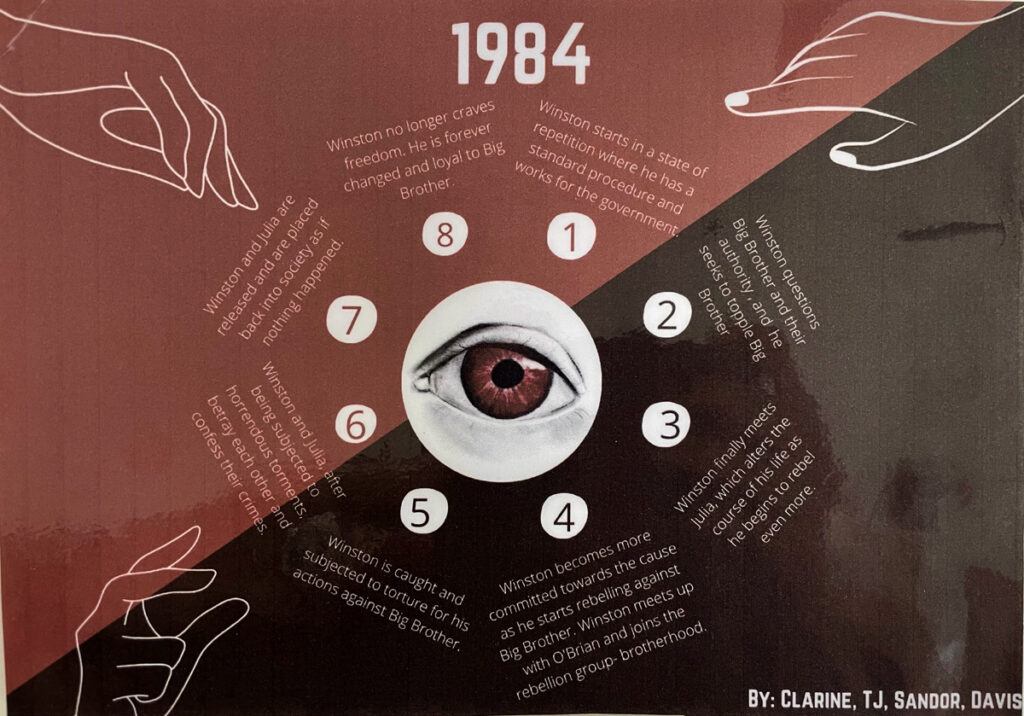Note from the AP English Literature Class
What’s going on in AP English Literature
By Elizabeth LaMertha
AP English Teacher
“So, what do you do in AP English? Read lots of books?” Yes, and …. “Write lots of papers?” Yes, and …. I’ve been asked these questions multiple times, so I want to share with the BAIS community an example of what AP English students do.
In 1956, educational theorist Harold Bloom established a taxonomy or a classification of types of thinking. He created a pyramid of thinking skills that move from foundational thinking such as remembering and understanding to higher order thinking such as analysis, synthesis, evaluation, and creation (Mcdaniel, 2010). Today, higher order thinking has been capsulized within the term “critical thinking.” Critical thinking is considered one of the 21st Century skills necessary for students to develop and master while in school in order to be successful in higher education and the workplace (21st Century Skills, 2013). Other 21st Century skills include “problem solving, reasoning, synthesizing information, creativity, personal expression, self-direction, planning, self-discipline, oral and written communication, public speaking, listening, teamwork, collaboration, using virtual workspace, and interrogative questioning” (21st Century Skills, 2013). All of this is what the AP English students just did in one week of class!
Recently, AP English students finished reading the dystopian novel 1984 by George Orwell. (I did tell you that we read lots of books in this class.) After reading the novel and studying seven different ways an author could construct the plot of the story, the AP students formed three groups in order to analyze the plot structure of the novel and discuss the significance of Orwell’s structure on the meaning of the work. Students were then tasked with synthesizing their understanding by creating a visual plot outline based on the plot structure that they felt Orwell used.
Each group demonstrated creativity, self-direction, planning, and personal expression through their choice of plot structure and their construction of the plot outline. None of the groups chose the same plot structure nor approached creating their plot outline the same way. One group demonstrated high levels of personal expression and creativity by using their own artistic abilities to design and draw their plot structure poster. The other two groups demonstrated their abilities to use digital workspaces by using different digital platforms (Prezi and Canva) to create their visual plot outline. All groups demonstrated teamwork, collaboration, and problem solving as they negotiated with each other over the choice of plot structure, the key textual evidence to use in support of their ideas, and the final image their plot structure would take.

After spending three days working on their plot structure posters, the AP students spent another three days presenting their posters to their classmates. Each team was required to explain their understanding of Orwell’s plot structure, their reasoning for choosing the plot outline that they did, and the overall effect that particular plot structure had on the meaning of the book. The rest of the class listened intently, especially because each group had chosen a different plot structure. After the presentation, the presenting team was asked to wait in a breakout room or outside the classroom (two groups had to present through Google Meet because it was a B week; one group was able to present in person when we returned to an A week rotation) while the rest of the students discussed the group’s choice of plot structure and understanding of the novel. The listeners composed two critical response questions to ask the presenting group, who upon their return to class, had to defend their reasoning, understanding, and choices.
At first glance, these projects may look simply like a poster, a picture, or an image, but behind these images is a breadth of knowledge, skill, and thinking that demonstrates that these BAIS juniors and seniors are ready to take on the 21st Century.
References
Mcdaniel, R. (2010). Bloom’s Taxonomy. Vanderbilt University; Vanderbilt University. https://cft.vanderbilt.edu/guides-sub-pages/blooms-taxonomy/
21st Century Skills Definition. (2013). The Glossary of Education Reform. https://www.edglossary.org/21st-century-skills/
Updates from the Administration
Parent Teacher Conferences
- Nov. 4th: 3:00pm-7:00pm
- Nov. 5th: 8:00-11:00am
Be sure to check your “baisedu.family” emails often! Soon, our school communications will be sent exclusively via that medium.
Starting the week of November 1, as long as we are still finding our Phase 2 plan to be yielding favorable and safe results, BAIS will begin welcoming students on campus for full days, three times per week. Mondays and Fridays will be half days, per our current schedule, but Tuesdays, Wednesdays, and Thursdays will be full days. Schedules and protocols for outdoor lunchtimes and “mask breaks” will be outlined via email communication early next week.
Our aim is to begin offering full days of school, five days per week, starting November 15. Please be reminded that we are still in a trial period and that there exists the potential for sudden changes.
BAIS Eagles!
I am happy to see your eagerness to join the After School Club(s). Registration for Q2 clubs is now closed. Please pay your club fee by Monday, October 25th. You can give the payment either to me or Ms. Dias.
Together!
Hani Ramappa
AD
‘I Love to Read!’ Month!

Elementary students – get excited!
I Love to Read month begins on November 1st!
Stay tuned for more info!








